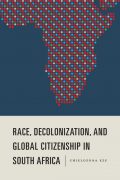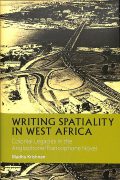J’ai couru vers le Nil d’Alaa El Aswany | Une critique de Caroline Janssen
Comment un littérateur engagé peut-il rendre hommage aux manifestants de la Place Tahrir? Comment peut-il figer dans le temps le moment fugitif et formidable des événements qui s’y sont déroulés en janvier 2011?
Dans son dernier roman ‘J’ai couru vers le Nil’, l’auteur cairote Alaa el Aswany nous explique comment, inspiré par la ‘révolution de jasmin’ en Tunisie, la population égyptienne sort de sa léthargie et occupe l’espace public. La foule se tourne contre le président Hosni Moubarak. La corruption de son régime, les abus des policiers, l’état d’urgence devenu permanent, les handicaps sociaux, le manque d’opportunités de travail et le chômage des jeunes diplomés, les prix élevés des biens de première nécessité, la manqué de liberté d’expression: la liste des frustrations est longue. La suite est connue: les manifestants remportent une victoire qui prend les autorités par surprise. Selon les mots de l’auteur “La place Tahrir était devenue une petite république indépéndante ; la prémière terre égyptienne libérée de la dictature.” (p. 200)
Les journalistes internationaux sont là, et les photographes capturent le moment. Les spécialistes analysent plus tard les causes et les circonstances, la suite et les conséquences des manifestations. Mais comment pénétrer dans l’âme des gens qui l’ont vécu? Ceux qui faisaient partie de cette révolution aussi bien que ceux qui étaient du côté du pouvoir, ou qui étaient déchirés entre deux camps opposés ? Et encore plus important, comment garder le feu sacré de cette révolution allumé?
C’est là le domaine de la littérature engagée.
Alaa el Aswany était co-fondateur de Kifâya (‘Assez!’), mouvement d’opposition à tendance laïque et de gauche, en 2004, qui appellait à une réforme démocratique et aux éléctions libres. Dentiste de formation, il sait comment exposer les nerfs. Voici un auteur qui ose aller où les autres ne vont pas. Il ne s’impose aucune limite. Avec précision, il dissèque le système politique et religieux. Les brutalités du régime sont décrites en grand détail. L’hypocrisie des politiciens et des religieux est mise à nu. Pour lui, il n’y a pas de vaches sacrées. Son ironie est mordante. Il n’hésite pas à utiliser les formules islamiques, omniprésentes dans la vie quotidienne, dans un sens satirique. Sans aucune doute son humour irrévérencieux s’inscrit dans la tradition de la littérature arabe iconoclaste, qui lutte contre l’hypocrisie depuis très longtemps (cf. le grand libertin médiéval Abou l-‘Alâ al-Ma‘arrî).
Ne nous trompons pas. Ce livre est plus qu’un hommage aux résistants. Il tourne autour d’une question lancinante, qui tourmente et hante l’auteur: comment les forces réactionnaires ont-elles pu reprendre le contrôle? Comment il se peut qu’au fond des choses, quand on fait le bilan, il semble que rien n’a vraiment changé? Quels sont les mécanismes qui ont mené à cet échec? Comment déconstruire le discours des tenants du pouvoir et des médias qu’ils controlent pour reprendre les choses en mains? Que faire? ‘J’ai couru vers le Nil’ est un livre riche en information, le résultat d’une réflexion profonde sur les réalités sociales et la révolution; il est aussi le fruit amer des désillusions qui s’en suivirent. Les lecteurs de son roman de début ‘L’Immeuble Yacoubian’ noteront qu’il y a une certaine légèreté d’esprit qui s’est dissipée, malheureusement.
L’auteur fournit un cadre précis pour interpréter ce qui s’est passé dans son pays, non seulement au niveau officiel, mais également au quotidien. Comme dans ‘L’immeuble Yacoubian’, sa plume ignore la censure. Celle-ci réagit comme on pouvait s’y attendre. Son roman, publié au Liban, est interdit en Egypte. Depuis peu, le parquet général militaire égyptien décida de poursuivre l’auteur pour ses ‘insultes envers le président, les forces armées et les institutions judiciaires égyptiens.’ (à suivre).
J’ai couru vers le Nil / ‘l’Etat comme-si’
Le titre français est suggestif: ‘J’ai couru vers le Nil’ évoque des images de l’immense fleuve qui donne la vie au désert égyptien, du temps de pharaons, des débuts de la civilisation et son apogée. Le titre original arabe est beaucoup plus brut: ‘L’état comme-si.’ Voilà un auteur qui le dit. C’est le livre d’un homme qui ose écrire ‘Dans les pays respectables, le gouvernement protège le droit des citoyens à croire ce qu’ils veulent.’ (p. 201) En effet, le titre arabe est emblématique: dans ce roman, il s’agit de l’état profond. C’est un livre sur la corruption, l’hypocrisie, les systèmes d’oppression, le rôle de l’armée, la fake news, les théories de complot, les cruautés, le cynisme et les perversités des dirigéants du pays.
Mais le traducteur français a fait un bon choix. Nous découvrons que le Nil apparaît dans ce contexte précis. Les gens y prennent refuge. Dans les rues, la barbarie reigne: les tanks de l’armée viennent d’écraser les manifestants. Rien de plus humiliant et déshumanisant que d’être forcé à abandonner les morts et les blessés pour se sauver la vie:
“J’ai couru vers le Nil. Les grenades lacrymogènes remplissaient l’atmosphère et moi je pleurais, je ne sais pas si c’était à cause du gaz ou à cause du jeune qui était mort, ou à cause de moi, ou si c’était pour tout à la fois. En revenant j’ai vu de mes propres yeux un grand nombre de morceaux humains laissés par le tank : des intestins, des cerveaux, des jambes, des moitiés de corps. Tout cela je l’ai vu. Mais le plus dégoûtant, c’est que j’ai vu des gens qui couraient, terrorisés, et qui marchaient dessus. Personne ne pense plus.”(p. 340)
Détail saillant: cette description n’est pas sortie de la plume de l’auteur. Alaa el Aswany a entrelacé dans son roman des témoignages authentiques, transcriptions littérales des déclarations faites à chaud par ceux qui ont vécu les traitements dégradants et inhumains dont se servait le régime. Ce qu’ils décrivent est hallucinant. Certains images peuvent hanter le lecteur bien après la lecture.
Les personnages
Comme dans ‘L’Immeuble Yacoubian’, l’auteur nous offre un kaléidoscope de personnages, grands et petits, qui jettent la lumière sur le tissu social. La polyphonie lui permet de confronter le lecteur à une grande diversité d’opinions et de perspectives. Le discours de l’auteur est très inclusif. Son engagement social est évident. Il accentue que la révolution appartient au peuple, à tout le monde, aux musulmans et aux coptes, aux étudiants de la génération ‘Facebook’ et aux ouvriers, aux intellectuels et aux fans de football, aux laïques et aux croyants, aux femmes voilées et non-voilées, …
Ce n’est pas par hasard que le livre s’ouvre sur la routine matinale du général Alouani, chef de la Sécurité d’état, l’incarnation de l’état profond. Il est introduit comme un homme tiré à quatre épingles, un musulman irréprochable, humble et sincère dans ses sentiments religieux. Malgré sa position privilégiée il refuse de s’enfermer dans son enclave de riches. Il prie dans la mosquée parmi le peuple. Mais l’auteur dévoile peu à peu ses côtés obscurs. Il explique, en badinant, que le général est parmi ceux qui font l’amour le matin, tout en ajoutant qu’en islam, c’est une chose licite. Pour rester fidèle à son épouse de 120 kilo, il regarde un film pornographique avant l’acte sexuel. Il se réalise que c’est une chose ‘blâmable’ en islam, mais ainsi il évite d’accomplir ‘des péchés mortels.’ Ce n’est qu’en dehors du cadre familial, lorsqu’il entre dans les bureaux de l’Organisation, qu’il se transforme en monstre bestial. Loin de l’oeil public, il assiste de routine aux intérrogations des prisonniers politiques. Sa sauvagerie devient manifeste et l’auteur nous plonge dans les abysses du régime. La torture et le traitement dégradant des prisonniers ne connaissent pas de limites: l’humiliation corporelle, les coups, des décharges éléctriques sur les testicules, le viol institutionalisé: “Nous avons amené ta femme Maroua et je te jure, fils de pute, que si tu ne parles pas je laisserai les policiers la sauter sous tes yeux.”(p. 15) La femme est déshabillée, ridiculisée, humiliée devant les yeux de son mari: “Les policiers déchirèrent son soutien-gorge, découvrant les seins de la femme qui poussa un long cri. L’homme alors s’écroula: ‘Assez, pacha, je vais parler, je vais parler.’ Le lieutenant s’approcha de lui: ‘Tu vas parler, fils de pute, ou je laisse les policiers la féconder.” (p. 16).
Au fil du chapître, la moquerie de l’auteur devient de plus en plus piquante. Dieu a accordé au général des biens en abondance, entre autres une belle maison à Londres. Le général utilise des ruses pour dissimuler son népotisme. A la fin du chapître apparaît la joie de sa vie, sa fille Dania, étudiante en médecine. Sur ses ordres un officier de confiance écrit des rapports réguliers sur ses allées et venues, et ce qu’il lit cause de l’inquiétude …
Nourhane et les médias
Le sjeikh Chamel, homme de religion, et la belle Nourhane, présentatrice, sont des pilliers du régime. La carrière de Nourhane prend son envol au moment des manifestations. Elle porte la voile pendant les émissions – une faveur exceptionelle qu’elle a obtenue – et s’érige en icône musulmane. Ses programmes sont très populaires; sa mission est de discréditer les révolutionnaires. Elle interviewe des soi-disant manifestants qui se répentent et qui avouent être payés par ‘les juifs et les franc-maçons’, la théorie de complot favorie des autorités. Poussée par une ambition dévorante, elle lave le cerveau des spectateurs qui ont confiance en cette femme modèle.
Les manifestants
Les manifestants sont de tout âge, de toute classe, et de tout obédience religieux. Il y a Asma, la professeur d’anglais qui refuse de porter la voile, de se marier et de désavantager les élèves pauvres. Il y a Dania, la fille du chef de la Sécurité de l’état, déchirée entre sa famille et son condisciple le révolutionnaire Khaled; il y a Achraf, un bourgeois copte, amoureux de sa domestique, qui trouve un nouvel élan grâce à la révolution. Il y a l’image du vieux balayeur anonyme en tenue orange, qui traînant derrière lui un balai dépenaillé, s’écrie: “Les enfants. Maintenant que vous avez commencé, il ne faut plus vous arrêter. Ne reculez pas!” (p. 141) C’est comme si les scènes sont prises ça et là, dans les rues du Caire.
L’auteur précise que l’organisation des frères musulmans n’a pas soutenu la révolution, point important pour lui. Nous savons bien sûr que le parti de Mohamed Morsi, issu des Frères musulmans, a gagné les éléctions qui suivent. Il est renversé par un coup d’état organisé par l’armée après des démonstrations contre son régime. Le nouvel homme fort al-Sissi apparaît à l’horizon. En avril 2019, le Parlement étend le mandat et les pouvoirs du président, après un référendum.
L’intérêt d’Alaa el Aswany a bientôt été reconnu par les grandes maisons d’édition, bien avant le déclenchement de la révolution égyptienne. Le lecteur des éditions Actes Sud a pu suivre le développement de sa carrière, avec la traduction de ‘L’immeuble Yacoubian’ (2006) ‘Chicago’ (2007), ‘J’aurais voulu être égyptien’ (2009), ‘Chroniques de la révolution égyptienne’ (2011); ‘Automobile club d’Égypte’ (2014) et ‘Extrêmisme religieux et dictature. Les deux faces d’un malheur historique’ (2014). Les livres d’Alaa el Aswany documentent un moment pivotal de l’histoire. Dans sa belle traduction, la dernière addition de la série, ‘J’ai couru vers le Nil’ nous montre la fragilité de la démocratie, de la liberté, de la vie civilisée, des fondements des pays respectables.
Caroline Janssen, Université de Gand
This review was published in: Africa Book Link, Summer 2019



